Palestrina: A Rome day trip back 2,200 years ago to the powerful Roman Republic and a massive sanctuary

PALESTRINA, Italy — Before the Virgin Mary there was Fortuna Primigenia.
She was the Roman Goddess of Fate, the oldest daughter of Jupiter. In 204 B.C., as the Roman Republic flexed its muscles, the largest sanctuary on the Italian peninsula was built in her honor. Stretching 1,300 feet at the base and crawling up the hillside 450 feet, the complex became somewhat of a mecca for new mothers. They brought their newborn children to the Temple of Fortuna Primigenia to improve their kids’ chances of surviving infancy, back when half the children died by the age of 5.
The temple remains the largest sanctuary in Italy and I’m standing in the middle of it. From a narrow service road where we parked, I look down at a grassy space longer than a football field. Large stones are stationed equal distance apart along the side, like starting blocks for a track meet.
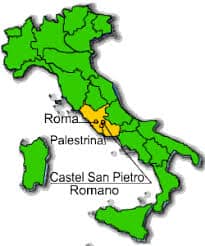
Beyond I can see a vast valley and if not for morning fog, I could see the Tyrrhenian Sea beyond.
Travel through Lazio
Marina and I are taking another one of our many day trips from Rome. As Italy continues fighting an uphill battle against the Covid pandemic, with restrictions likely to get harsher before they get lighter, we’re taking advantage of the few things we can do. Traveling around Rome’s Lazio region is permitted. Fortunately, there is more to see in Lazio than many countries. Just a little larger than Connecticut, Lazio has everything from the snow-capped Apennine Mountains to sandy beaches on the Tyrrhenian to delicious wine country around Frascati to medieval hill towns sprinkled throughout to the cute villages of Castelli Romani.
Oh, and did I mention Rome is a nice town?
As the center of what was the world’s most powerful civilization in man’s history, Lazio is dripping with its remains. The Temple of Fortuna Primigenia is one of them.

It’s located only 22 miles east of Rome and we drive on a beautiful 65-degree day into the foothills of the Apennines. The town of Palestrina, on the slope of Monte Ginestro, has 22,000 people and is vastly overlooked even by the most savvy travelers getting off Rome’s wildly beaten track. I’d never been here. Marina, a third-generation Roman, hadn’t visited since 1984.
Combine a little-known historical site and a pandemic that has crushed Italy’s tourism industry to the tune of 100 billion euros last year and we have the whole place practically to ourselves.
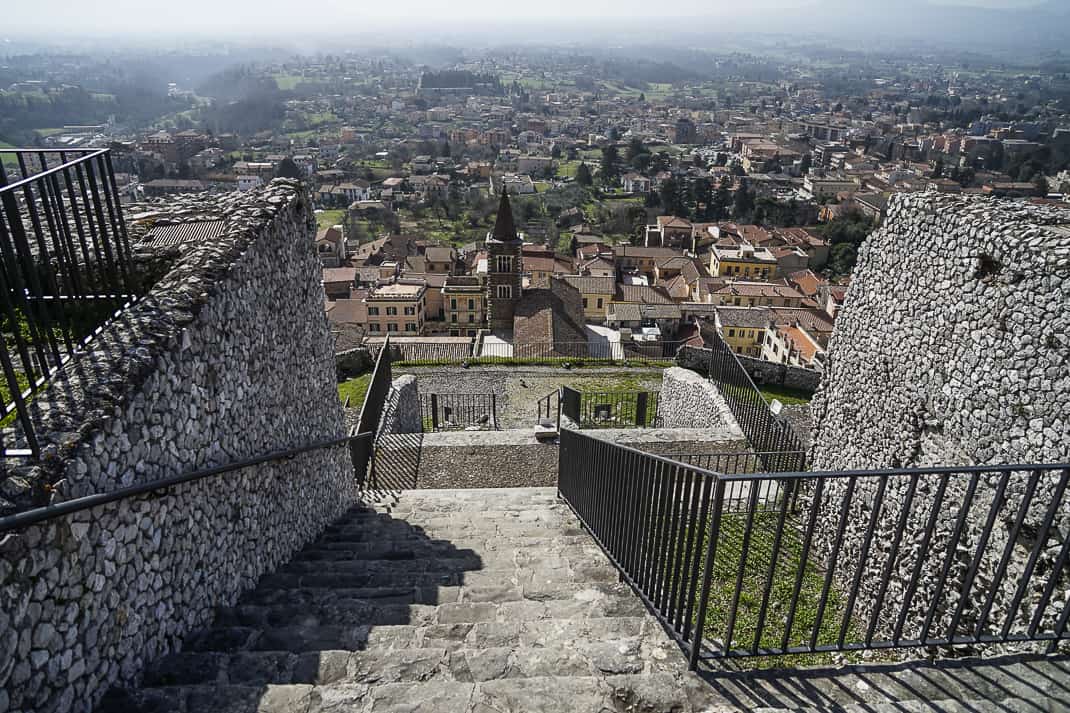
We walk down a long, steep, stone staircase to the heart of what remains of the temple. Three thick Corinthian columns hold up a huge stone wall. Flanking the temple is a series of tall, stone walls that look like what we were once dwellings or shops. Two men surveying the ground say the long wall was built to hold up a pedestrian road above it.
This was a highly sophisticated complex. It had several layers of terraces and staircases, a basilica, a meeting hall and two reservoirs they used for the fountain and the surrounding town.
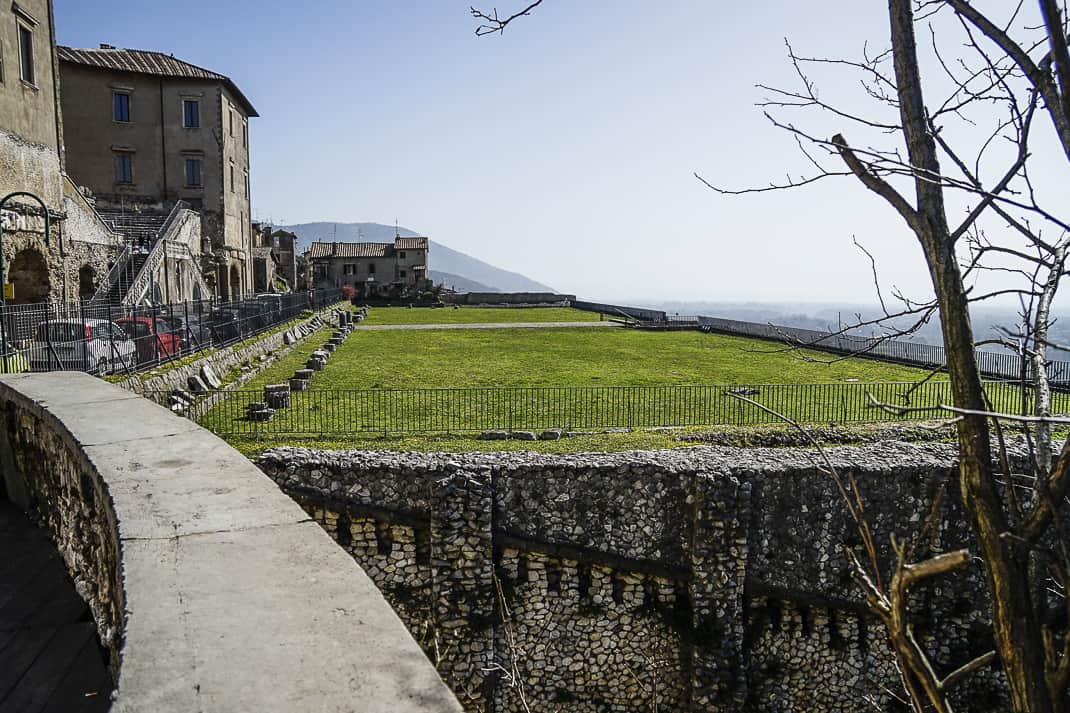
The history
Like everything else else associated with Ancient Rome, the history drips with blood. Before the temple, the town was known as Praeneste, meaning “overlooking” in reference to its great viewpoint. The independent city fought against the Romans during the Latin War from 373-370 B.C. before finally succumbing in 338 B.C.
Praeneste lost much of its territory to the Romans who made it a popular summer resort for its wealthy citizens and noblemen during the Roman Empire. Emperors such as Caesar Augustus (63 B.C.-14 A.D.) and Hadrian (117-138 A.D.) stayed here as did Pliny the Younger (61-113 A.D.), the famous Roman author.
Rising above the temple, the Chiesa di Santa Rosalia looks downright modern. It was built in 1043. The Colonna family, a powerful family of Italian nobles during the medieval and Renaissance periods, built the massive brick building when they took over the Palestrina fiefdom. It was destroyed in 1298 by Pope Boniface III who opposed the Colonna barons, rebuilt in 1437 then destroyed again by Cardinal Vielleschi and rebuilt again by prince Francesco Colonna.
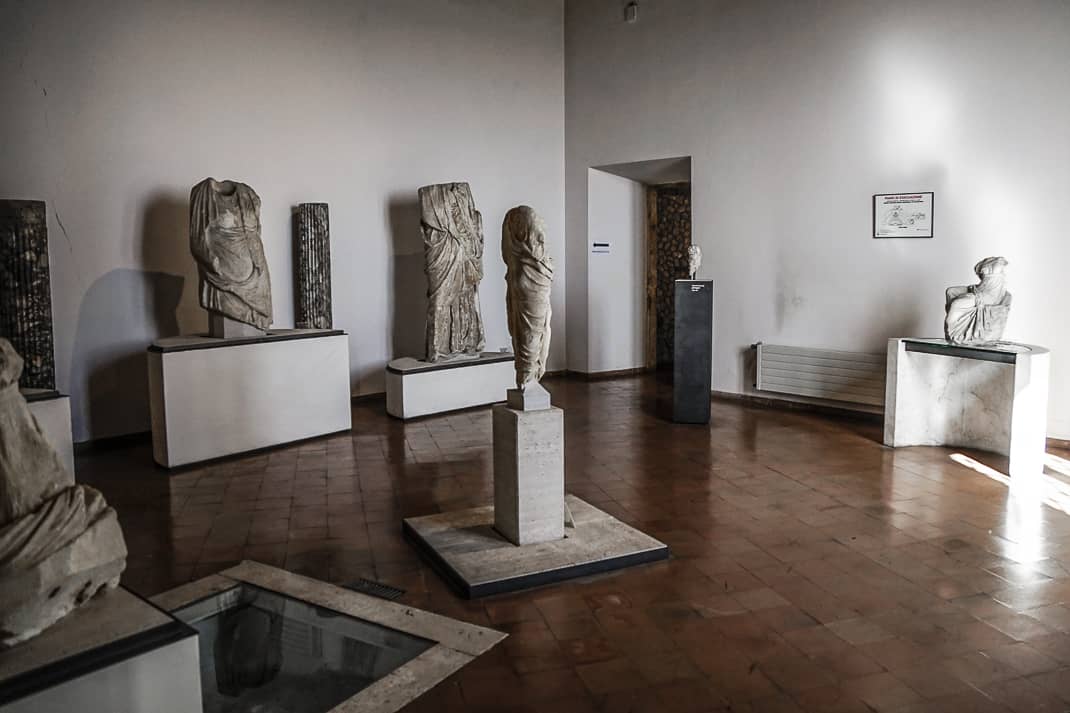
In 1956, the Italian government bought the palace and set up the spectacular National Archeological Museum inside it. This is the crown jewel of Palestrina, one of the best archeological museums in Italy. It is filled with sculptures and remnants of ancient funeral rites as well as housing one of the most remarkable pieces of art in a country with more art than anywhere in the world.
The rooms
The first room is filled with statues of heads. These portraitures were considered a prerogative of the Roman Republic’s earliest aristocracy and was the only social class allowed to exhibit their ancestors’ portraits. In another room are headless statues.
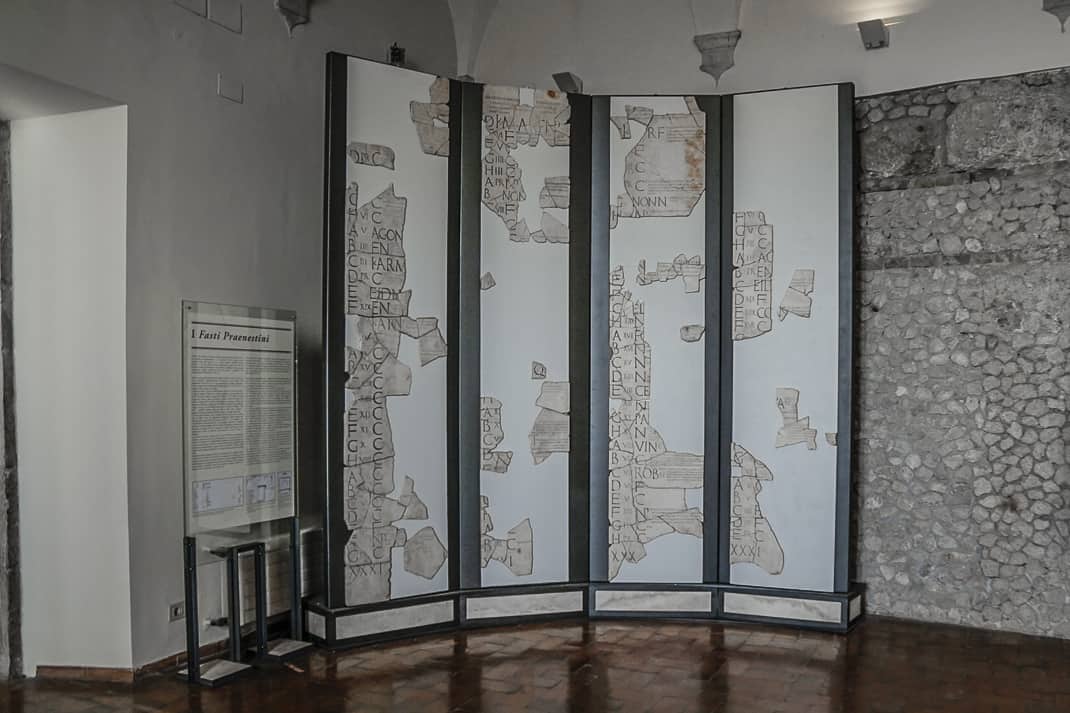
Room 2 has a copy of a calendar from 70-120 A.D. with large Roman letters and numbers found around the area in the 18th century. Its calendar was made of 12 slabs, each representing a different month, and reflects the reforms Julius Caesar made in 45 B.C. It even reflects a leap year every four years.
The museum is heavy on information. Each room has a long description in Italian and English and describes the many changes that took place during this time. The museum talks about the changes in increased morality when the Republic morphed into the Roman Empire in 27 B.C. and increased after the birth of Christ.
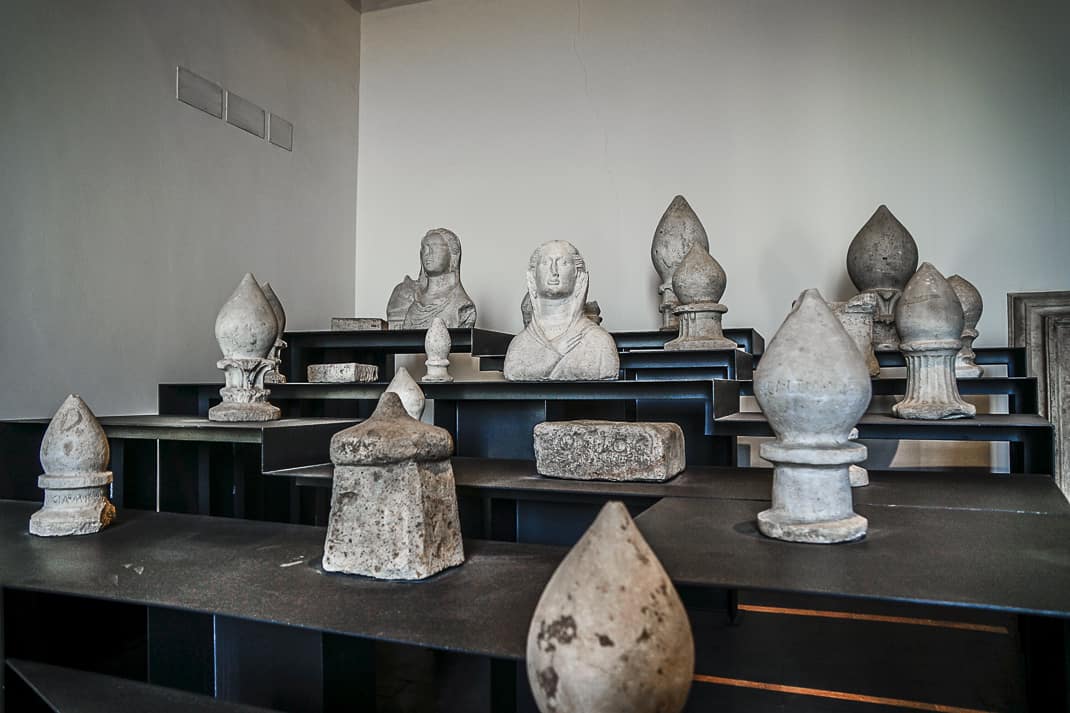
We go up stairs to what is the necropolis, the room of death. The first room features long, giant tombs with display cases showing objects found in them such as hairbrushes, mirrors and jewelry. We walk into the next room and see what looks like giant bishop pieces on a chessboard. They’re actually heads of gravestones made of limestones. They stand amidst giant stone graves and large, elaborately messaged tombstones. These were signs of the growing economic status of Praeneste between the 4th and 2nd centuries B.C.
A third room is huge, with massive wall mosaics made up of black and white tiles showing an elaborate battle between griffins and horses.

Flooding of the Nile
But the museum’s highlight is on the third floor. Covering an entire back wall 20 by 13 feet is a remarkable, enormous multi-colored mosaic depicting the flooding of the Nile. Egypt was Roman territory for 600 years starting in 30 B.C. And this mosaic showed individual scenes covering the gamut of society. The upper half of the mosaic is the Upper Nile near Ethiopia with archers hunting birds, soldiers with shields and wild prehistoric-looking animals everywhere. The bottom half is the Mediterranean society with the graceful felluca boats floating down the river, Roman soldiers in a meeting hall and toga-clad citizens.
This is one of the largest mosaics in the world and its origins remain a great debate. Archaeologists believe it’s from the 2nd century B.C. The artists came from Alexandria, Egypt, with the lead artist believed to be Demetris, “The Painter of Landscapes,” who lived in Rome starting in 165 B.C. This mosaic once served as the floor of the rear apse of a large hall in the Praeneste Forum.
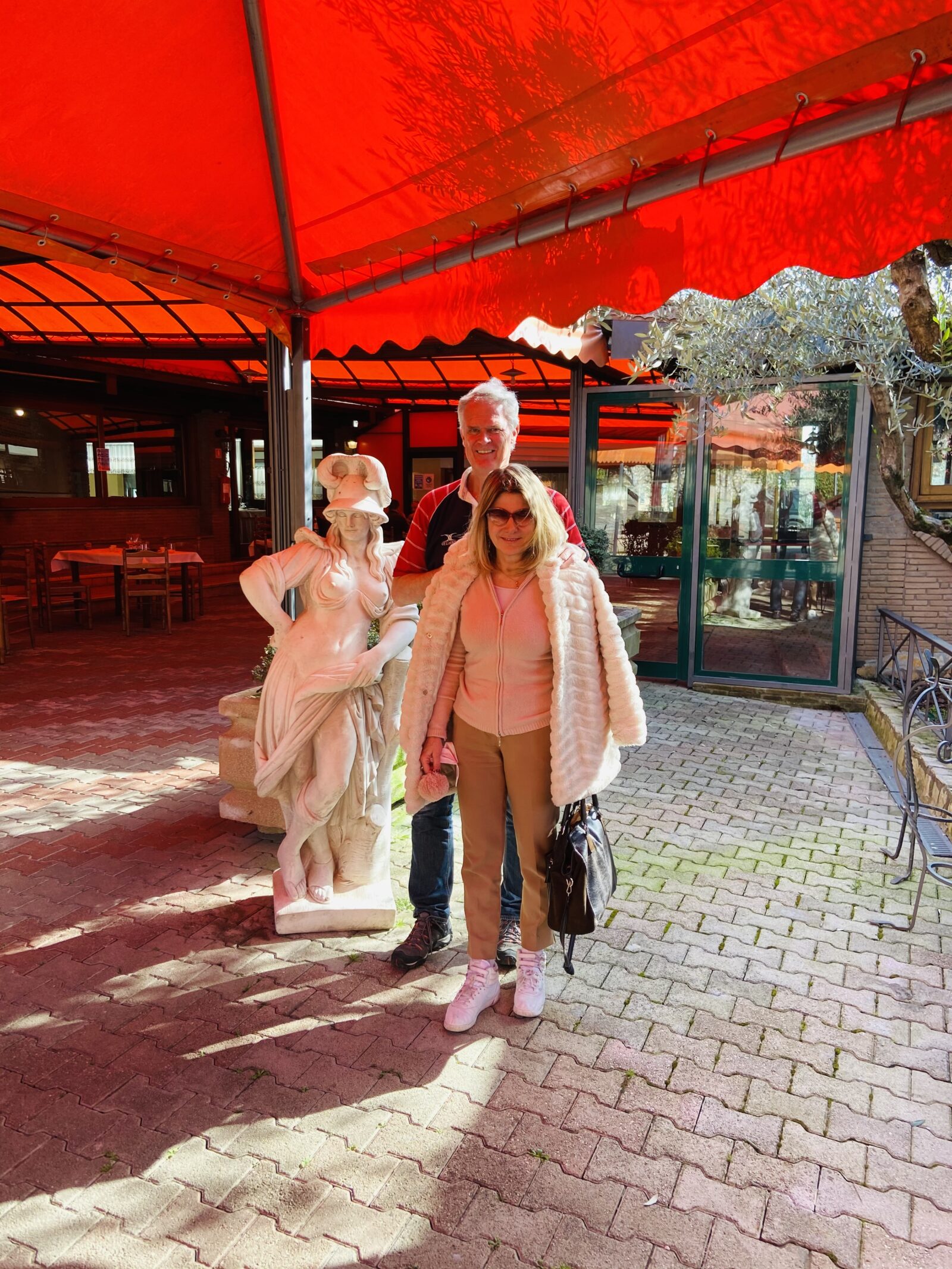
Dining
After an hour we hit information overload. We need a place to veg and enjoy the Palestrina of today and not over 2,200 years ago. A very underrated place to eat in Italy is an agriturismo. It’s a farm house that serves fantastic, all-natural food to the public and often houses travelers in over-the-top beautiful settings. They’re all over Tuscany but can be found throughout the country.
We find one on the outskirts of Palestrina, past the pleasant streets of the modern town. Casale Pepe is two pink, two-story buildings nestled in a forest of trees with a big, covered patio of stone tile.
Filling the tables are locals and other farmers sitting over huge plates of mixed meats and cheeses with a single bottle of wine anchoring the table. They all talk in a deep Roman dialect Marina can barely make out.
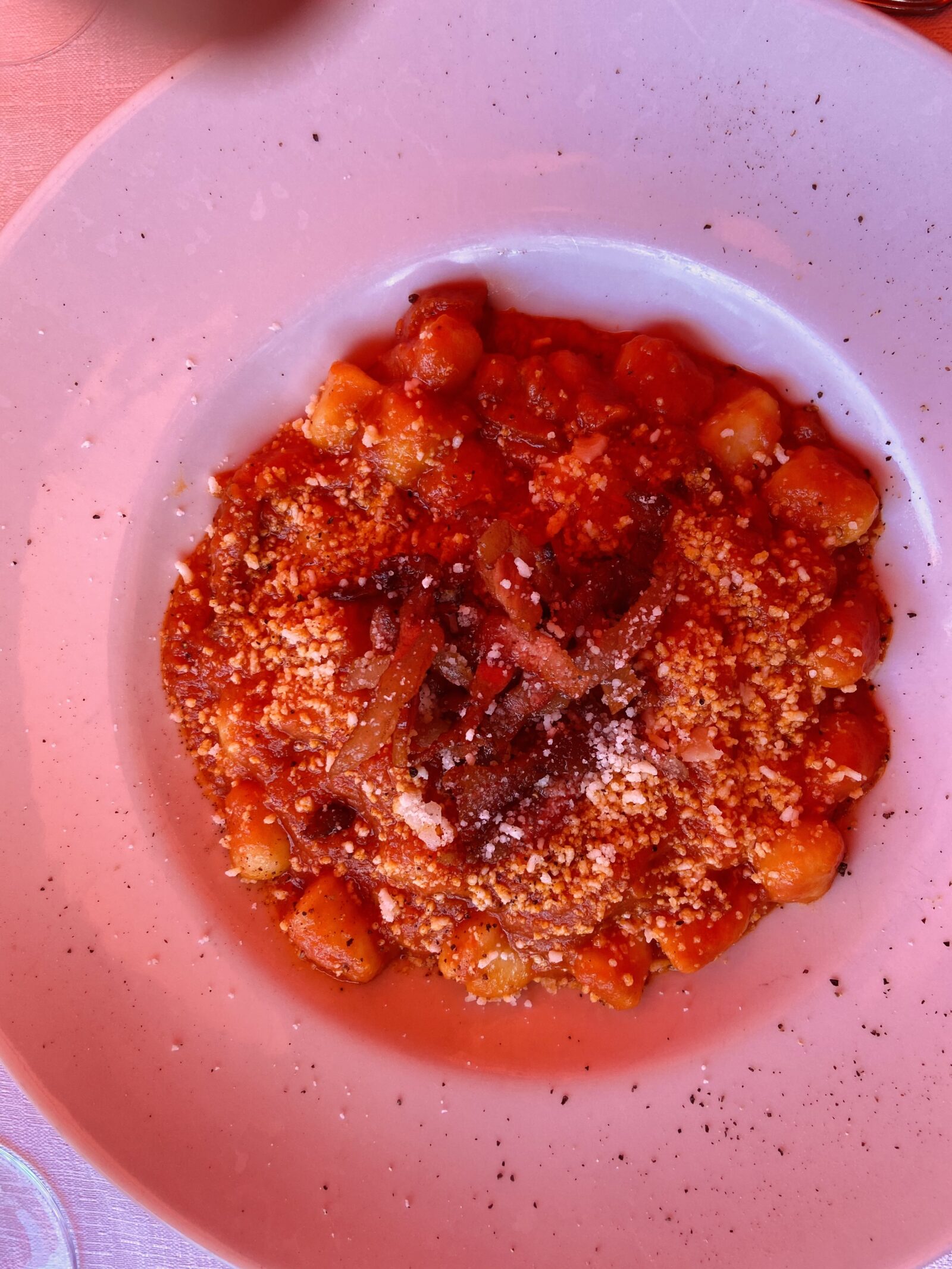
The only thing annoying is the Italian pop music playing on the loudspeaker. A little soft opera music would put it right in the middle of central casting. But contrary to popular belief, old Italian men don’t sit around listening to “O Sole Mio.”
“This is very Lazio,” Marina says.
I order something unusual: gnocchi amatriciana. These are two Lazio traditional dishes rarely served together. Gnocchi are little potato dumplings served in a variety of ways, with tomato sauce, mushrooms, broccoli, sometimes sausage. Casale Pepe serves it with amatriciana, the traditional Roman sauce of tomatoes, guanciale (pig’s cheek), onion and pecorino cheese. It’s as heavy as a bowling ball but excellent, exploding with flavor and the guanciale has virtually no fat.
Marina has tagliata, thin slices of beef, with potatoes. With a half bottle of local Cesanese red wine, bread, coffee and freebie fried cheese appetizers, the total bill is only 35 euros.
I lean back, take a sip of wine, blink at the bright sun shining on the nearby meadow and tell Marina, “Now THIS is traveling.”
Unfortunately, it all may change. Again. Italy’s Covid case curve is not declining (although the death rate is) and the supply chain of vaccines is a mess. New prime minister Mario Draghi will announce new Covid restrictions Friday.
Italy’s lone light this winter remains the sun.
In case you go …
Where is it: National Archaeological Museum of Palestrina, Via Barberini 22, 39-06-953-8100, http://www.polomusealelazio.beniculturali.it/index.php?it/228/museo-archeologico-nazionale-di-palestrina-e-santuario-della-fortuna-primigenia, drm-laz@beniculturali.it. Open daily 9 a.m.-5 p.m. March, 9 a.m.-6 p.m. April, 9 a.m.-6:30 p.m. May, 9 a.m.-7 p.m. June-August, 9-5:30 p.m. September, 9 a.m.-5 p.m. October, 9 a.m.-4 p.m. November-December. Tickets 5 euros.
How to get there: Buses leave from Rome’s Termini train station every four hours. Trip 1 hour with change at San Cesareo. Price 4-5 euros.
Where to eat: Agriturismo Casale Pepe, Via Quadrelle 26/28, Palestrina, 06-9563-5029, 333-276-8723, info@casalepepe.com, www.casalepepe.com.


March 3, 2021 @ 4:24 pm
Another amazing piece – your writings make me long for Italy! I love how your commentary mixes today’s world with the Italy of long ago. I find myself wanting to dive deeply into the history of Italy, Rome, and all things ancient. How did you even find this place? I’ve never heard of it! It makes me wonder how many other amazing, hidden gems there are sprinkled all over Italy. Your posts have become a weekly highlight for me. Grazie!
March 3, 2021 @ 4:53 pm
Another brilliant article. I really look forward to your posts it gives me so much more to think about for our return to Italy. Grazie!!